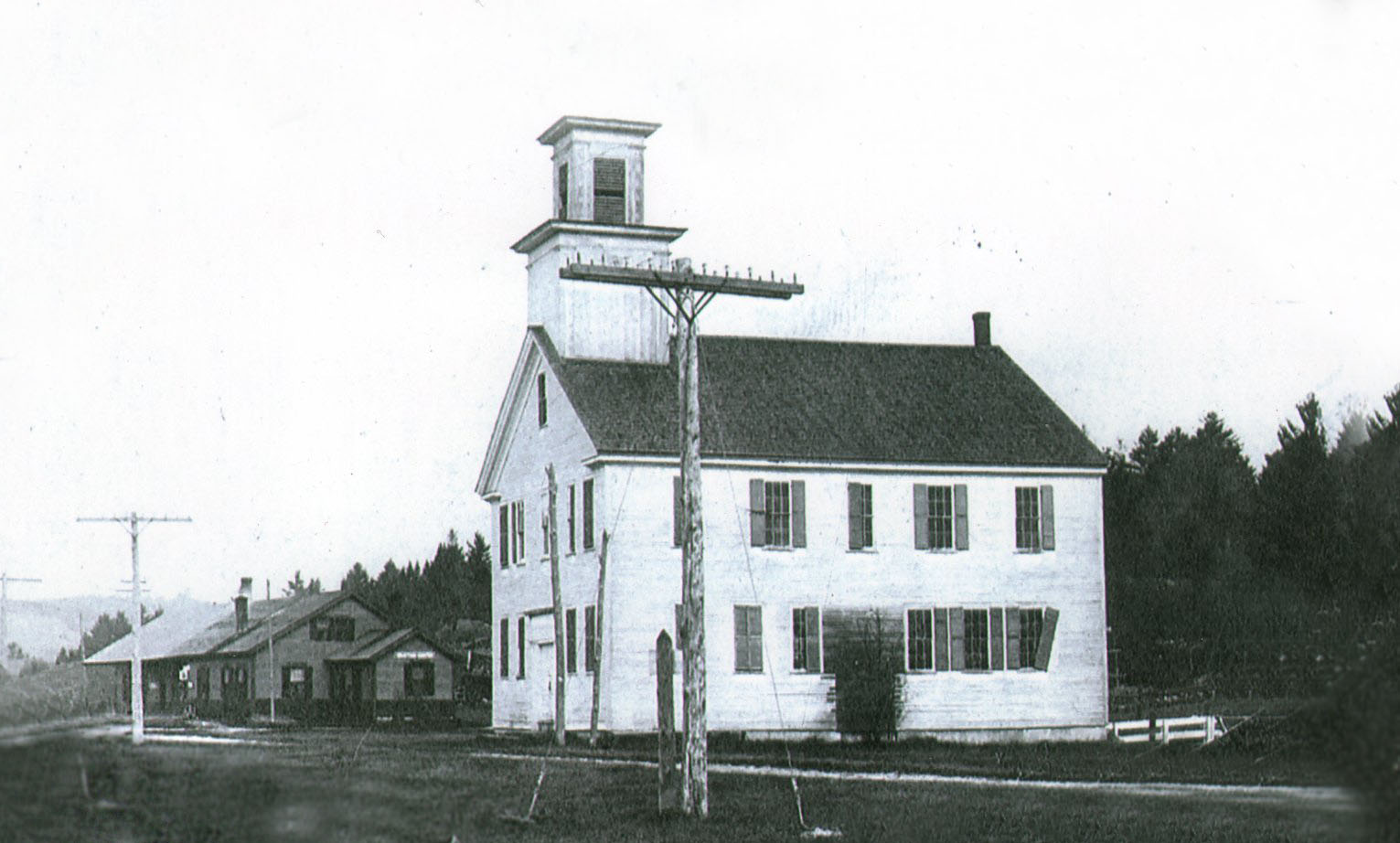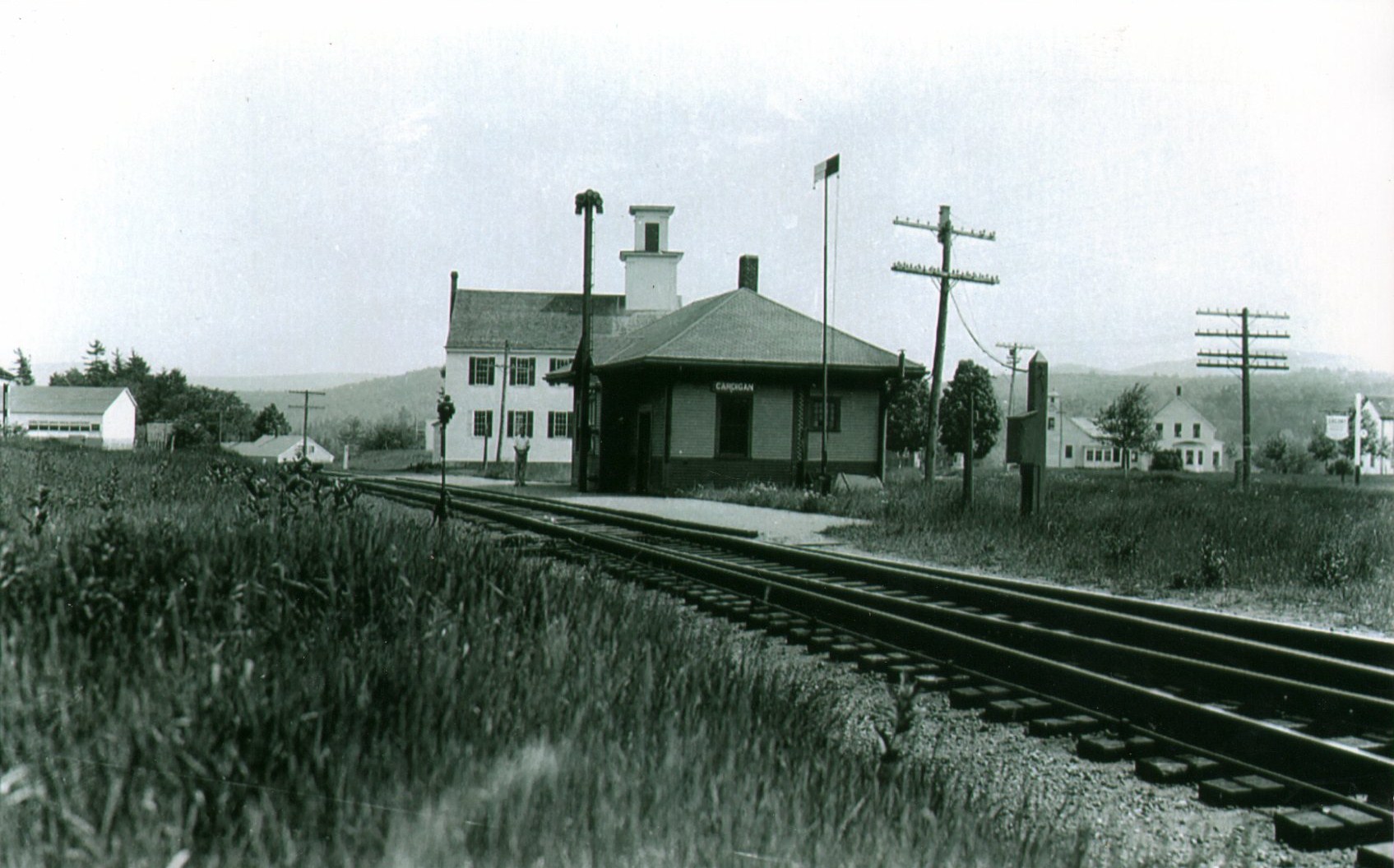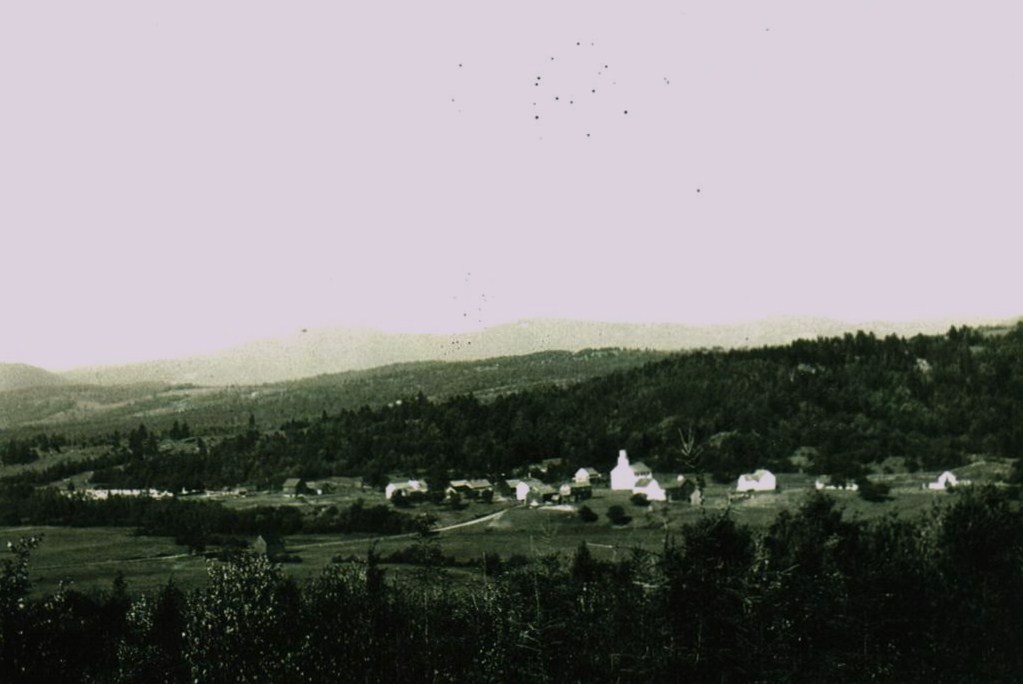HISTORY
Grafton was incorporated as a town in 1778 and in 1785 built its first meetinghouse with help from a Baptist congregation. This meetinghouse, the North Meetinghouse, was located near Razor Hill Cemetery where Grafton’s population first settled.
But by the 1790s Congregationalists were growing in number and the population was shifting away from Razor Hill. The town voted to build a second meetinghouse at Grafton Center.
After years of negotiations, construction started in 1797. The original design had twin porches (or gable end stairwells) and a mezzanine on the second floor. The contract stipulated that Grafton Center have “two seats each side of the Broad alley next to the pulpit and…two seats in the gallerys [sic] agreeable to Canaan meetinghouse.”
Rendering of Meetinghouse, 1797-1856.
By the mid-nineteenth century, Grafton was a different town thanks to the Northern Railroad, which allowed for the town’s resources (especially mica, lumber, and agricultural goods) to be shipped further and faster. The Toleration Act of 1819 officially ended public support of religious activities and Grafton, like several towns in New Hampshire, opted to divide the meetinghouse into two distinct floors in 1856: the church upstairs and the town hall downstairs. That same year, the meetinghouse was moved to create a common and rotated to face the road. The twin porches were removed and a bell tower was constructed.
The building continued to house both church and government until 1963, when the building became sole property of the Grafton Congregational Church. The church sold the building in 2010 and it thereafter became home to the Peaceful Assembly Church. In January 2016, fire damaged the building and claimed the life of the resident minister, John Connell.
In September 2019, MVP acquired the building.





